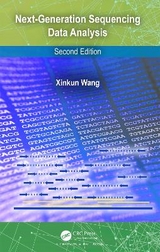
Next-Generation Sequencing Data Analysis
Apple Academic Press Inc. (Verlag)
978-1-4822-1788-9 (ISBN)
- Titel erscheint in neuer Auflage
- Artikel merken
The development of genome and transcriptome sequencing technologies has led to a paradigm shift in life science research and disease diagnosis and prevention. Scientists are now able to see how human diseases and phenotypic changes are connected to DNA mutation, polymorphism, genome structure, and epigenomic abnormality. Next-Generation Sequencing Data Analysis shows how next-generation sequencing (NGS) technologies are applied to transform nearly all aspects of biological research.
The book walks readers through the multiple stages of NGS data generation and analysis in an easy-to-follow fashion. It covers every step in each stage, from the planning stage of experimental design, sample processing, sequencing strategy formulation, the early stage of base calling, reads quality check and data preprocessing to the intermediate stage of mapping reads to a reference genome and normalization to more advanced stages specific to each application. All major applications of NGS are covered, including:
RNA-seq: mRNA-seq and small RNA-seq
Genotyping and variant discovery through genome re-sequencing
De novo
genome assembly
ChIP-seq to study DNA–protein interaction
Methylated DNA sequencing on epigenetic regulation
Metagenome analysis through community genome shotgun sequencing
Before detailing the analytic steps for each of these applications, the book presents the ins and outs of the most widely used NGS platforms, with side-by-side comparisons of key technical aspects. This helps practitioners decide which platform to use for a particular project. The book also offers a perspective on the development of DNA sequencing technologies, from Sanger to future-generation sequencing technologies.
The book discusses concepts and principles that underlie each analytic step, along with software tools for implementation. It highlights key features of the tools while omitting tedious details to provide an easy-to-follow guide for practitioners in life sciences, bioinformatics, and biostatistics. In addition, references to detailed descriptions of the tools are given for further reading if needed. The accompanying website for the book provides step-by-step, real-world examples of how to apply the tools covered in the text to research projects. All the tools are freely available to academic users.
Dr. Xinkun "Sequen" Wang is the director of the NUSeq Core Facility and research associate professor in the Department of Biochemistry and Molecular Genetics at Northwestern University. He was previously an associate research professor of neurogenomics in the Higuchi Biosciences Center and Department of Pharmacology and Toxicology at the University of Kansas, where he was also the director of the Genomics Facility and Genome Sequencing Core. Dr. Wang’s research focuses on unraveling genomic changes that underlie neurodegeneration in brain aging and neurodegenerative diseases, such as Alzheimer’s disease.
Introduction to Cellular and Molecular Biology: The Cellular System and the Code of Life. DNA Sequence: The Genome Base. RNA: The Transcribed Sequence. Introduction to Next-Generation Sequencing (NGS) and NGS Data Analysis: NGS Technologies: Ins and Outs. Early-Stage NGS Data Analysis: Common Steps. Computing Needs for NGS Data Management and Analysis. Application-Specific NGS Data Analysis: Transcriptomics by RNA-Seq. Small RNA Sequencing. Genotyping and Genomic Variation Discovery by Whole Genome Resequencing. De novo Genome Assembly from NGS Reads. Mapping Protein–DNA Interactions with ChIP-Seq. Epigenomics and DNA Methylation Analysis by NGS. Metagenome Analysis by NGS. The Changing Landscape of NGS Technologies and Data Analysis: What Is Next for NGS? Appendices. References. Index.
| Zusatzinfo | 9 Tables, black and white; 48 Illustrations, black and white |
|---|---|
| Verlagsort | Oakville |
| Sprache | englisch |
| Maße | 156 x 234 mm |
| Gewicht | 480 g |
| Themenwelt | Informatik ► Weitere Themen ► Bioinformatik |
| Naturwissenschaften ► Biologie ► Genetik / Molekularbiologie | |
| ISBN-10 | 1-4822-1788-0 / 1482217880 |
| ISBN-13 | 978-1-4822-1788-9 / 9781482217889 |
| Zustand | Neuware |
| Informationen gemäß Produktsicherheitsverordnung (GPSR) | |
| Haben Sie eine Frage zum Produkt? |
aus dem Bereich



